If You Can’t Do These Exercises, You Need to Exercise More

We all know that exercise isn’t exactly a one-size-fits-all sort of thing. The specific exercises a person chooses to do—and the amount of time they spend doing so—should be determined by the individual’s larger fitness goals, as well as their age and body composition. After all, if you’re just looking to trim some fat and tone up, a few trips to the gym per-week may do the trick. On the other hand, if you’re going for a full-body transformation, a more rigorous routine is required. Over 60? Under 40? Bigger or smaller? At the end of the day, you need to find the right workout for you.
That being said, it’s universally agreed upon that there are certain exercises that practically every able-bodied person on the planet should be able to do to be considered a healthy person. In fact, there are a number of quick fitness “tests” that can help you gauge where your personal fitness is at—and whether or not you really need to ramp up your training. Suffice it to say, if you can’t pass any of the follow exercise exams, you should be hitting the gym more regularly to get your fitness up to a better level. So read on, and for more exercises you should do—especially as you get older—don’t miss The Best Exercises for Building Stronger Muscles After 60, Say Experts.
The 3-minute plank test
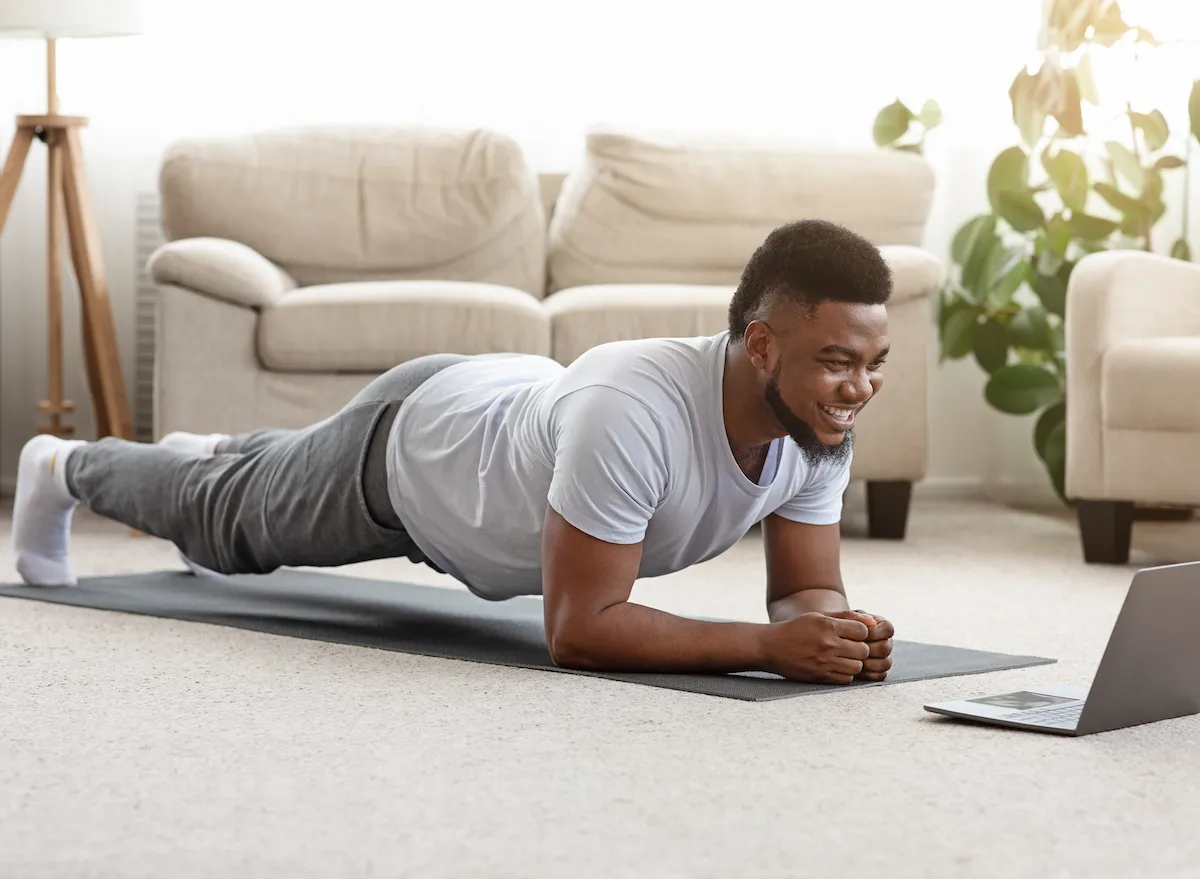
Planking is a simple exercise, but that doesn’t mean it’s easy. The plank position, described by Harvard as holding a push-up position while resting on one’s forearms, is great for both building and measuring core and upper-body strength. Generally speaking, the ability to hold a plank position for 10-30 seconds is considered the bare minimum in terms of adequate core strength.
If you really want to test your fitness level and progression, though, try out the 3-minute plank test as laid out by Mike Donavanik, founder and CEO of digital fitness platform Sweat Factor, for Well+Good.
“Being able to do this means that one, you have great core strength and two, great core muscular endurance,” he says. “With the plank, so many other muscles are engaged like from your chest to your lats, obviously your core, but even your quads, your glutes if you’re doing it all right. To be able to hold a regular plank for a three-minute duration without any breaks is great. Anytime you can have movements to a plank too, I mean you’re just killing it if you can do that.”
To start, spend a full 60 seconds holding a regular plank position. Then, spend 15 seconds each raising your right arm off the ground while maintaining your balance and body positioning, then your left, then your right leg, and finally your left leg. Spend the final 60 seconds holding a usual plank position to finish.
Donavanik recommends performing this test on a weekly basis to help get a better idea of your fitness progression, and whether or not your current routine is helping you reach your fitness goals. “You just want to be able to see that what you’re doing is working,” he explains. “If it’s getting harder, you know that something is either way off in your routine or that you may be dealing with an injury. If you’re unable to progress, you know you need to ramp up or change up your routine a bit.” And for more great exercise advice, see these 5-Minute Exercises for a Flatter Stomach Fast.
The sitting-rising test (SRT)
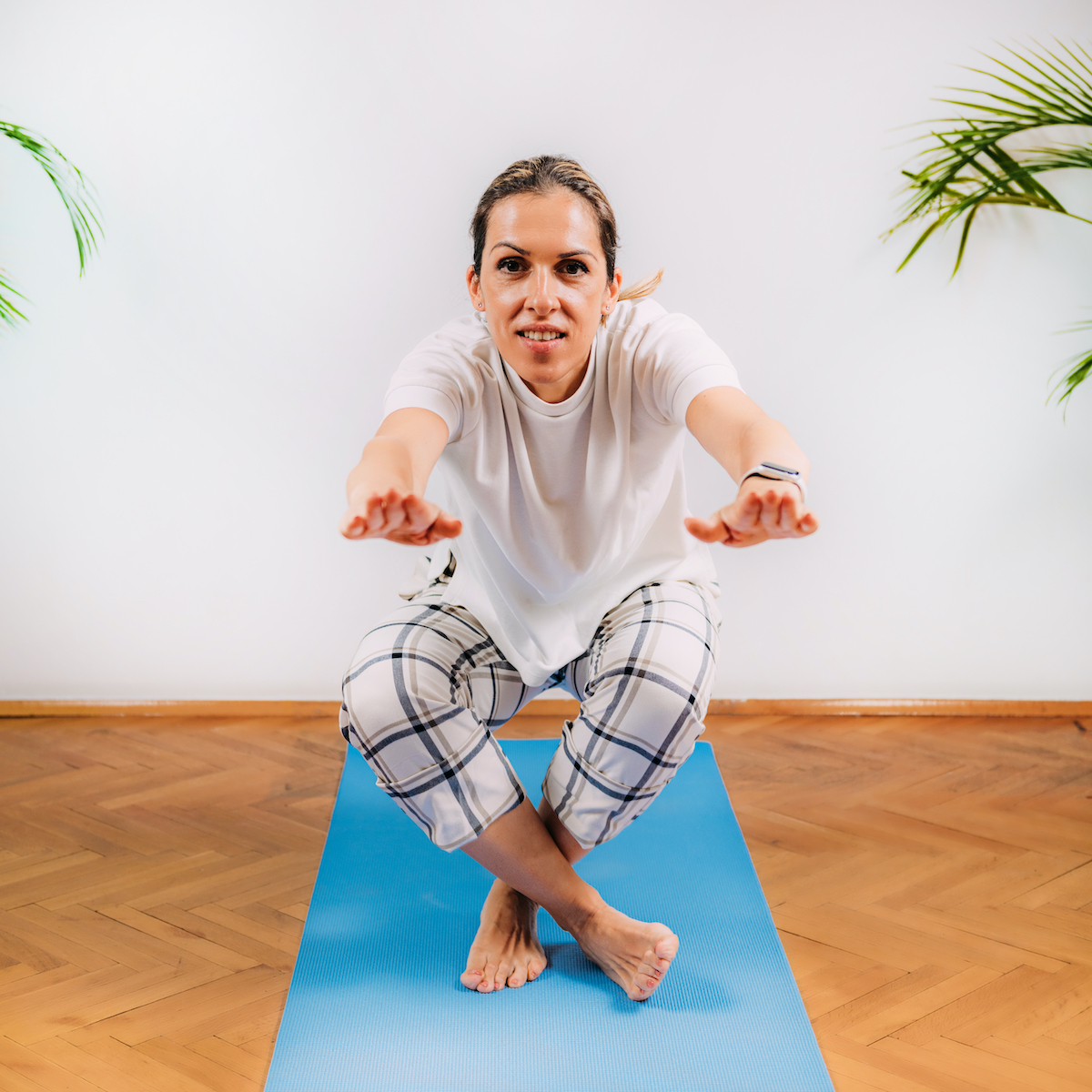
Can you sit down on the floor and pick yourself back up all without using a hand, knee, or forearm for extra support? If the answer is no, it’s time to consider more exercise. Research published in The European Journal of Cardiovascular Prevention reports that older adults unable to pass the sitting-rising test are five to six times more likely to pass away within a roughly six-year timeframe.
“If a middle-aged or older man or woman can sit and rise from the floor using just one hand—or even better without the help of a hand—they are not only in the higher quartile of musculo-skeletal fitness but their survival prognosis is probably better than that of those unable to do so,” study leader Dr.Claudio Gil Araújo comments. Find more on the SRT here.
The push-up test
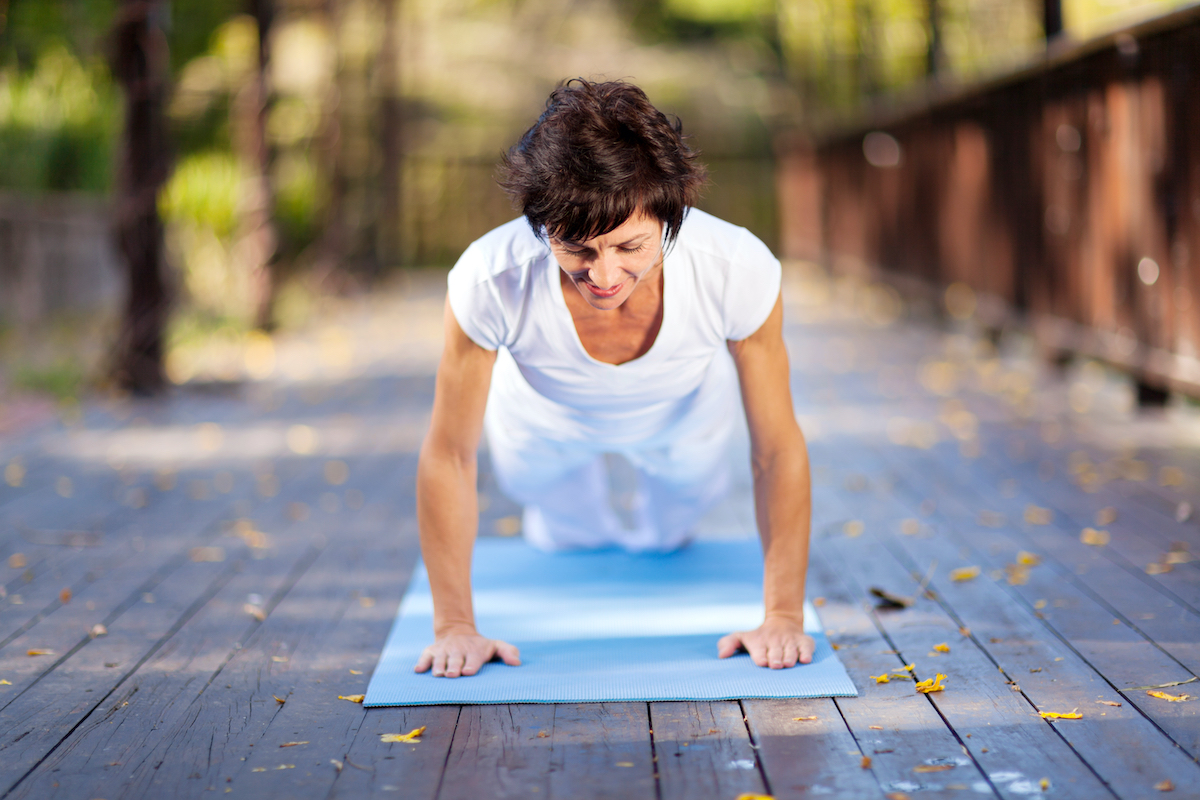
Another useful fitness barometer is the number of push-ups you can perform consecutively, depending on your age and gender. According to the Mayo Clinic, the following push-up counts are considered strong signs of a “good fitness level:”
-Men, aged 25 years old: 28 push-ups. Women, aged 25 years old: 20 push-ups.
-Men, aged 35 years old: 21 push-ups. Women, aged 35 years old: 19 push-ups.
-Men, aged 45 years old: 16 push-ups. Women, aged 45 years old: 14 push-ups.
-Men, aged 55 years old: 12 push-ups. Women, aged 55 years old: 10 push-ups.
-Men, aged 65 years old: 10 push-ups. Women, aged 65 years old: 10 push-ups.
If you can attain the push-up parameters listed above relatively easily, that doesn’t mean you shouldn’t shoot for more push-ups. One notable study published in JAMA Network Open concludes that men capable of performing at least 40 push-ups in one attempt are significantly less likely to develop heart disease over a 10-year period. In comparison to middle-aged men unable to complete more than 10 push-ups, those capable of 40+ were found to be 96% less likely to experience heart disease.
“Our findings provide evidence that push-up capacity could be an easy, no-cost method to help assess cardiovascular disease risk in almost any setting,” says first study author Justin Yang.
The jogging test
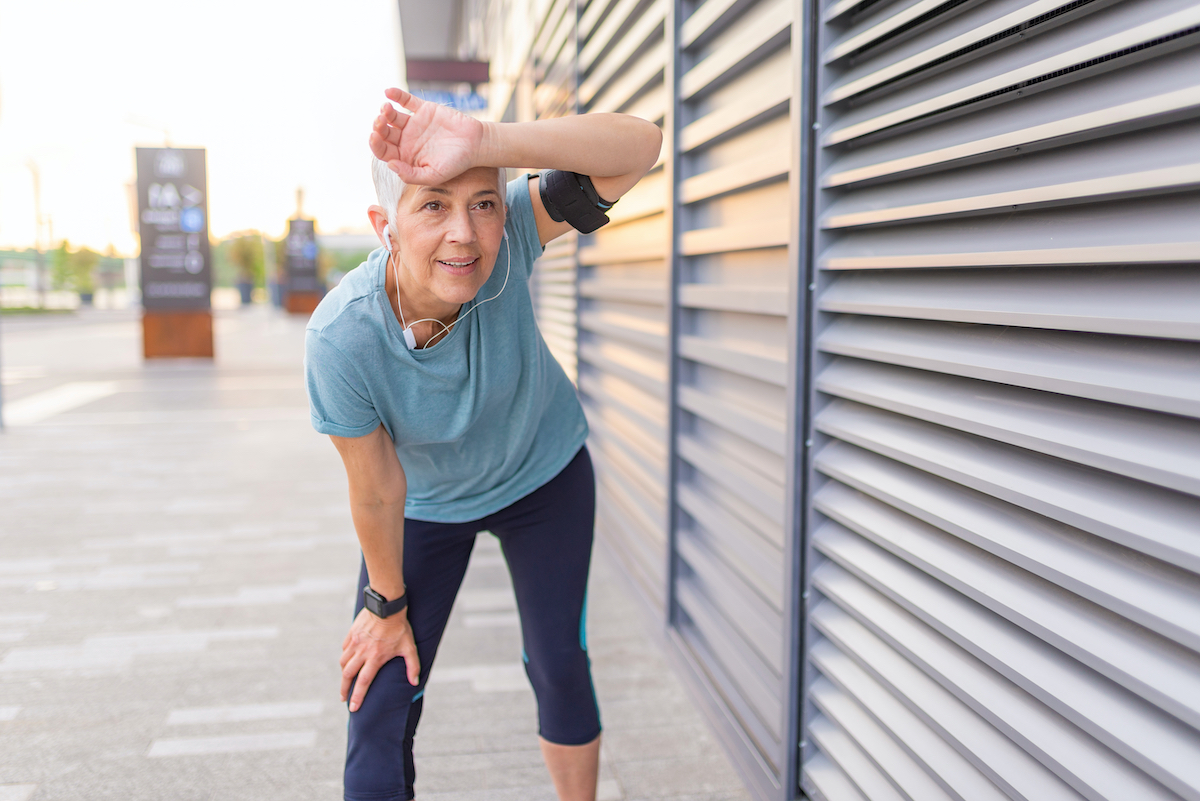
Research published in the Journal of the American College of Cardiology tracked a group of over 55,000 adults with an average age of 44 years old for roughly 15 years. That investigation led to the discovery that individuals who carved out enough time to run or jog for roughly seven minutes daily, or 51 minutes weekly, were 30% less likely die from any cause, 45% less likely to die from heart disease or stroke, and generally tended to live three years longer than non-runners.
So, this fitness test is very straightforward: Can you jog for seven minutes straight? If not, you’re missing out on some major life-extending benefits.
The stairs test
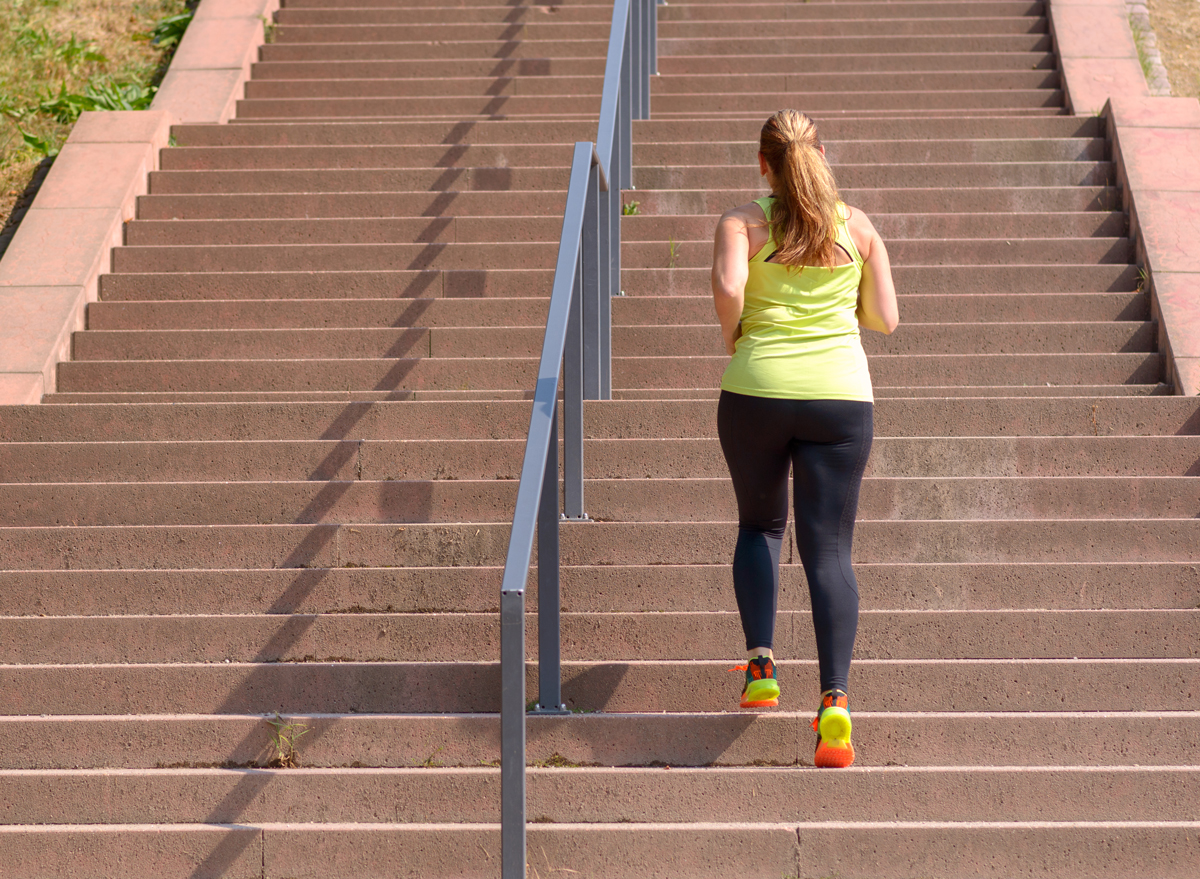
If your home, office, or local mall holds four flights of stairs (60 individual steps), you can use those steps to perform a quick fitness test. Research presented at the European Society of Cardiology’s EACVI – Best of Imaging 2020 reports the ability to climb up 60 inclined steps in under a minute is indicative of strong heart health and a lower mortality risk. If it takes you longer, study authors say it’s a sign to start exercising more.
“The stairs test is an easy way to check your heart health,” explains study author Dr. Jesús Peteiro, a cardiologist at University Hospital A Coruña. “If it takes you more than one-and-a-half minutes to ascend four flights of stairs, your health is suboptimal, and it would be a good idea to consult a doctor.” And for more reasons to exercise more, see here for What Happens to Your Body When You Sit Too Much Every Day, Say Experts.